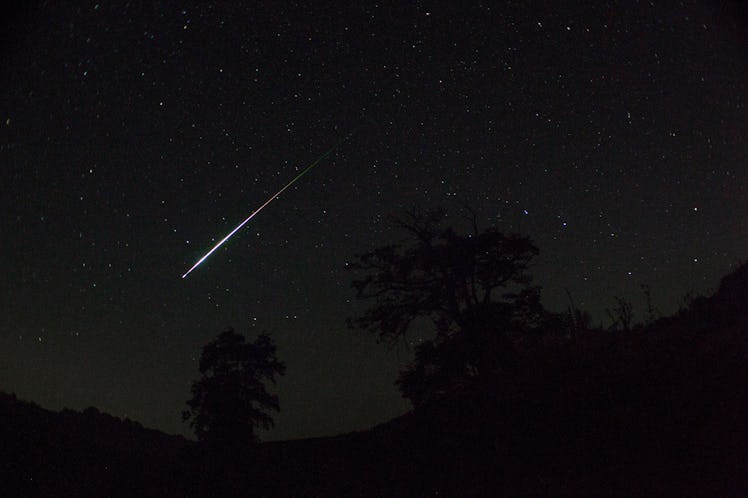How To See The Perseids Meteor Shower Peak During The Sturgeon Supermoon
Two shows in one isn’t always a good thing.

For anyone who loves to watch the sky shows, whether Full Moons or meteor showers, you probably already have the date marked in your calendar. It’s when the impressive Perseids Meteor Shower is set to peak and hundreds of glowing streaks can be viewed in the sky.
But this year, the August Sturgeon Moon is set to peak simultaneously, making the shower harder to view. So if you want to see the Perseids meteor shower, here’s everything you need to know.
When will the Perseids meteor shower peak, and when is this month’s Full Moon?
The Perseids meteor shower is technically active between July 14 and Aug. 24. However, the peak viewing dates are Aug. 11, 12, and 13. During this time, the meteor shower is super active, with estimates saying you might be able to see between 50 to 100 meteors per hour during the peak days. Since the Perseids shower is so active, it’s considered the best show of the year and a popular one since it’s not too tricky to spot a colorful meteor.
Also happening around the same time is the Sturgeon Full Moon, which is this year’s fourth and final Super Moon. This means the Moon will be super impressive and bright since it will be closer to Earth than any other time in the year. The Moon will reach peak illumination on Aug. 11, at around 9:35 p.m.
Why will the Perseids meteor shower be hard to see during the Full Moon?
Although it might sound like you’re getting two shows in one with both sky events happening simultaneously, that’s not necessarily the case. The sky needs to be relatively dark to get the best viewing of the Perseids meteor shower. The best viewing will come from watching when the Moon is shadowed.
Since the Full Moon is peaking at the same time, the Moon is essentially a sky flashlight. With it at peak illumination, it will not be easy to see the meteors in the Perseids shower.
“Sadly, this year’s Perseids peak will see the worst possible circumstances for spotters,” NASA astronomer Bill Cooke, who leads the Meteoroid Environment Office at NASA’s Marshall Space Flight Center, said in a statement.
“Most of us in North America would normally see 50 or 60 meteors per hour,” he added, “but this year, during the normal peak, the full Moon will reduce that to 10-20 per hour at best.”
How can I maximize my chances of seeing the Perseids meteor shower?
It’s not impossible to still get a good show out of the Perseids meteor shower, so all is not lost. If you want to maximize the number of meteors you can see in the sky, your best chance is to find the darkest place in the hours before the sun rises and the Moon begins to set.
NASA suggests making time to look up in the sky on Aug. 13 between midnight and dawn “because you never know – you might just catch one of the bright Perseid meteors that defy the glare of the Moon.”